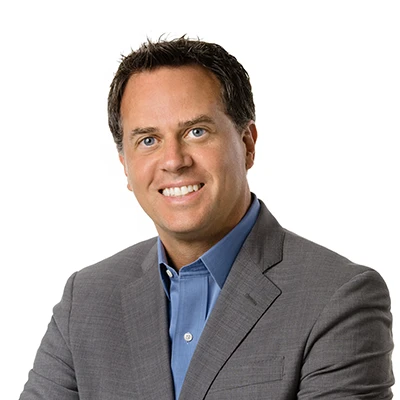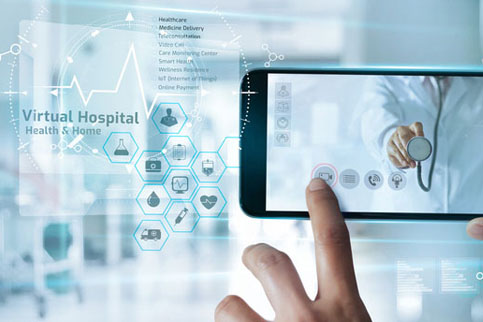As the coronavirus pandemic grinds through its second year, health systems are operating on shifting sands. From unpredictable surges in hospital volume to ever-changing regulations impacting daily operations, many healthcare leaders are understandably focused on the day-to-day issues rather than evolving toward what patient care looks like in a post-COVID-19 future.
But innovation doesn’t have to halt during this time of disruption. In fact, prolonged hardship can even fuel positive change. One proof point is the On Duty® Urgent Care Center, which Vituity opened in Chicago in 2020.
At the time, many patients were understandably anxious about seeking in-person care. To better meet their needs, On Duty implemented a Virtual Front Door (VFD) solution, which allows patients to initiate urgent care visits from home using any computer or mobile device. Depending on the results of an initial assessment, On Duty patients are either treated via telehealth or invited to the clinic for an in-person visit. Face-to-face patients arrive fully registered with orders in place, which all but eliminates wait times and minimizes patient-to-patient contact.
In a challenging year for outpatient medicine, On Duty has enjoyed unqualified success. Thanks to VFD, patients typically spend 25 minutes at the clinic compared to the national urgent care average of 60 minutes. On Duty Chicago quickly amassed 140 Google reviews averaging 4.9 of 5 stars. It’s a shining example of how high-tech partnerships can help healthcare organizations thrive in challenging times.
Partners in Healthcare Innovation
VFD is just one example of how Vituity is working with high-tech partners to rapidly transform care. Vituity’s innovation hub Inflect Health develops and invests in leading-edge technologies and solutions that improve healthcare delivery. With robust access to front-line providers and health systems, Vituity connects innovators to capital, physicians, and patients in real time.
About a year before the pandemic, Inflect Health partnered with high-tech startup Decoded Health to transform patients’ initial healthcare interactions when seeking care at urgent care clinics and emergency departments. The original vision was to improve patient experience and throughput efficiency and to allow a smaller provider team to care for more patients. The pandemic only underscored the value of this approach as it skyrocketed demand for virtual care solutions (and more recently, sparked acute staffing shortages).
VFD is an excellent example of how the high-tech and healthcare sectors can innovate together for the benefit of patients. Decoded Health’s solution leverages artificial intelligence to perform patient intakes. Patients speak with this virtual medical assistant in natural language through a mobile device or computer app. The assistant then uses its clinical “training” and, if necessary, loops in humans (provided by Vituity) to translate patient responses into a differential diagnosis with relevant best-practice workup and management guidance. This adds up to fast and seamless experiences for both patients and providers.
Bridging Patient Care Gaps
Many of the thorniest problems hospitals face could be solved with the right technology and infrastructure. However, there’s often a gap between needs and resources, particularly at smaller community hospitals. Inflect Health acts as a solution broker, which matches innovative health technology to the needs of practices across the country, regardless of size or location.
Yet another example is continuous EEG (cEEG) monitoring, a technology that allows ICU teams to monitor patients’ brains for seizure activity. In the event of a seizure, timely intervention can sometimes prevent long-term brain damage, especially in newborns. However, there aren’t enough trained neurophysiologists available to widely implement this life-saving technology.
Vituity is changing that through its partnership with tech startup Corticare, which provides remote cEEG monitoring where and when patients need it. Corticare deploys technicians to the bedside to set up the necessary equipment. Patients are then remotely monitored by a panel of Vituity neurophysiologists, who can flag seizure activity and consult with local teams on treatment. In addition, Vituity neurophysiologists prevent catastrophic patient injury by performing continuous intraoperative monitoring of the central nervous system (the brain, spinal cord, and nerves) during at-risk surgeries.
Virtual Care Innovation for Future Generations
While the pandemic highlighted the benefits of virtual care, solutions like VFD and remote cEEG monitoring also fit into the wider arc of healthcare evolution. Today’s consumers can handle their banking, travel arrangements, and shopping online in real time. It’s therefore no surprise that they expect the same access and convenience from healthcare providers.
For better or worse, the pandemic also highlighted fatal flaws in the current provider-centric paradigm of acute care. Health systems can no longer afford to demand that patients travel to their facilities. Instead, the ability to reach patients where and when they need care will likely become a crucial differentiator for our organizations. I’ve recently shared how telehealth can be a bridge to patients and providers and augments the traditional in-person experience. By equipping health systems to extend care beyond their walls, Vituity is creating a more connected and sustainable future for patients, clinicians, and hospitals.























